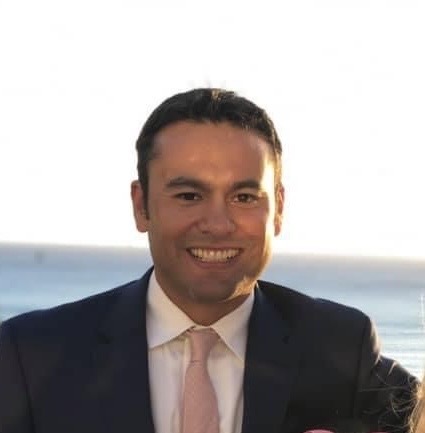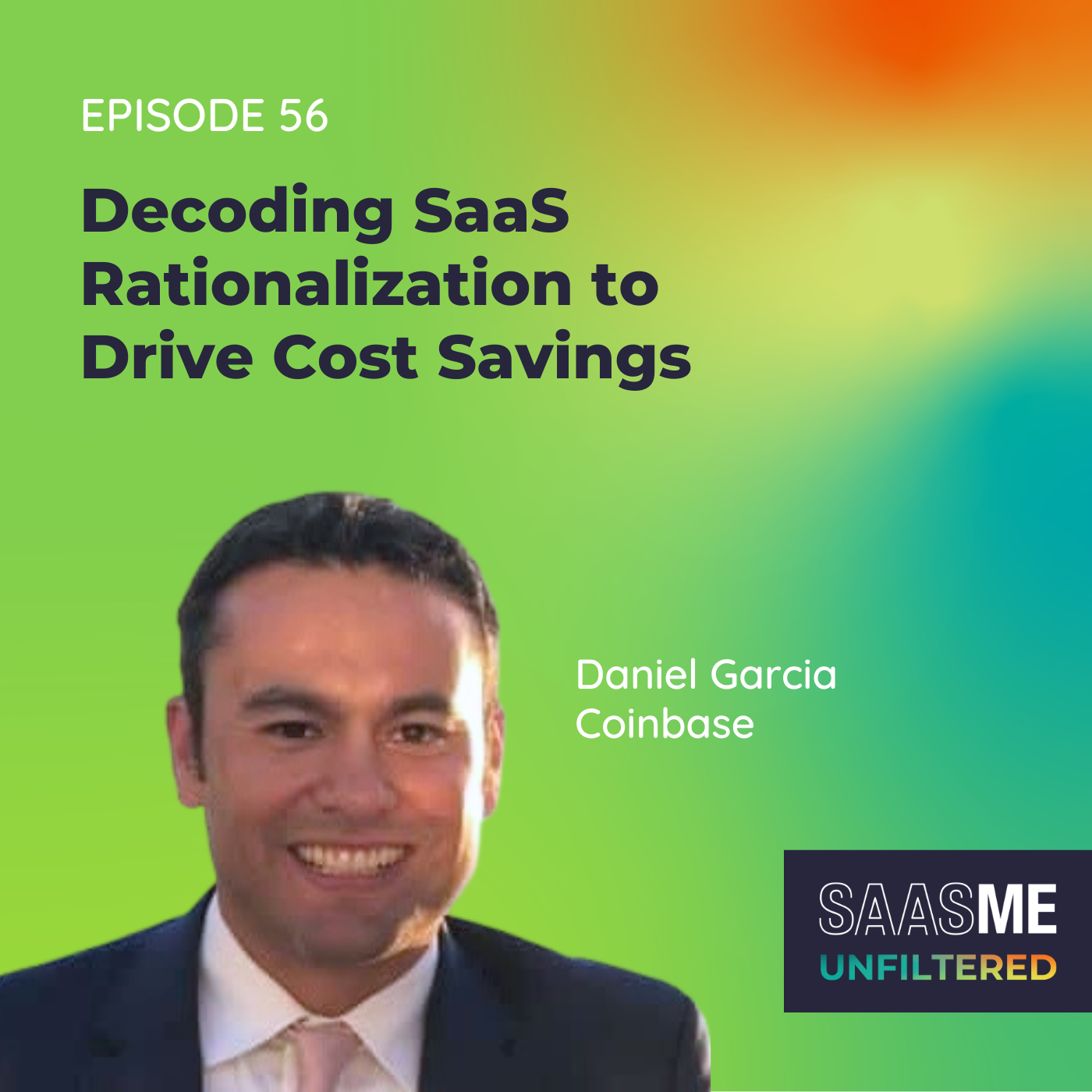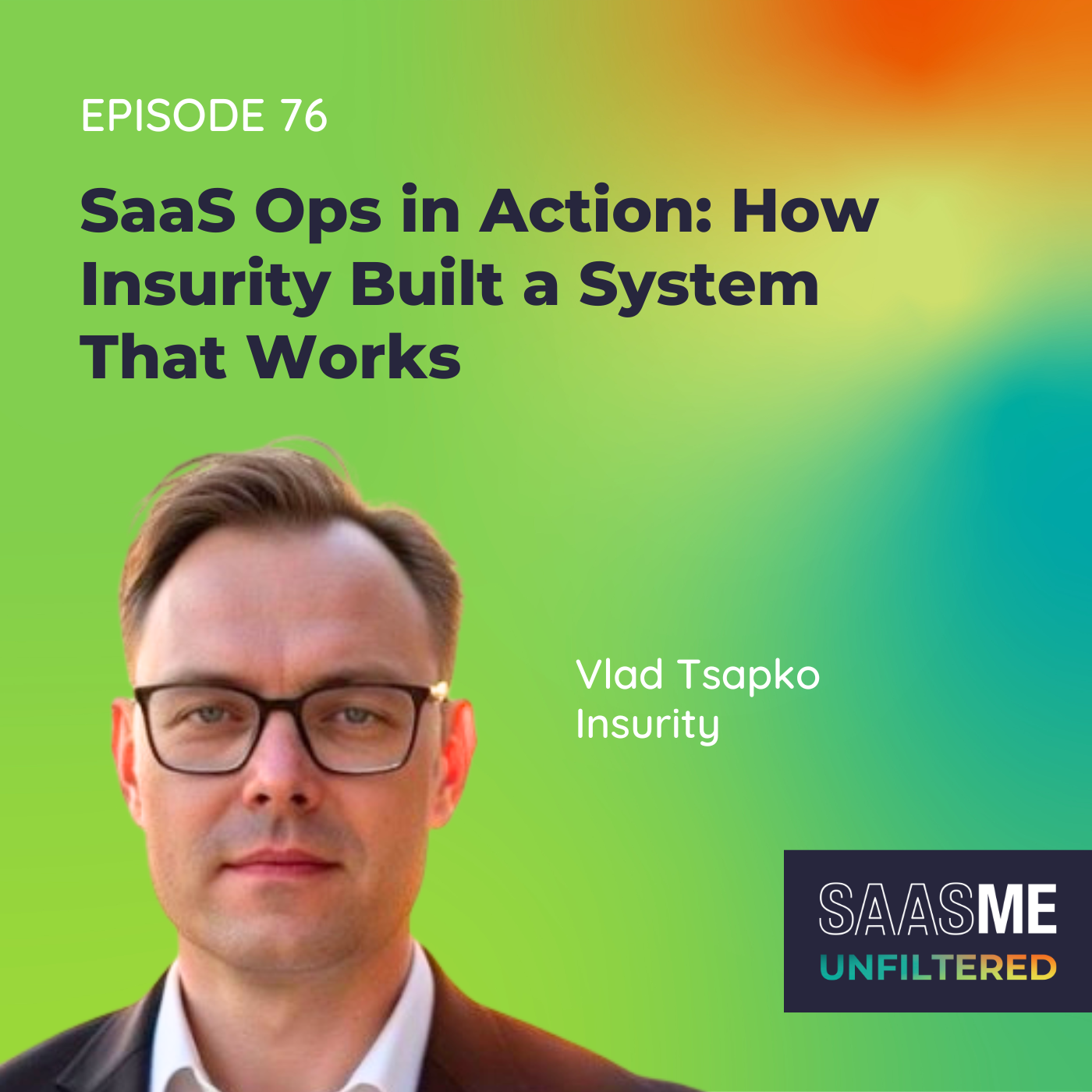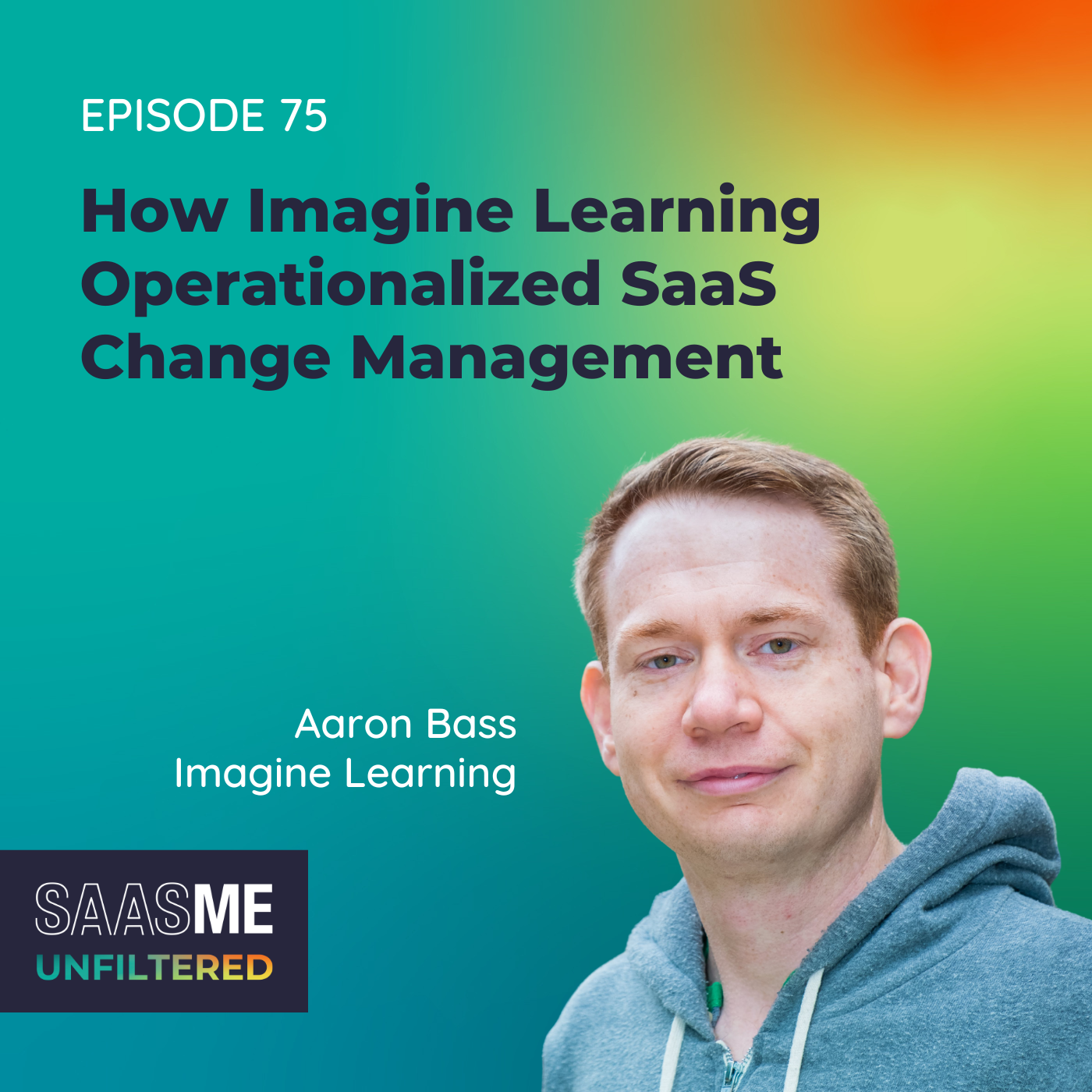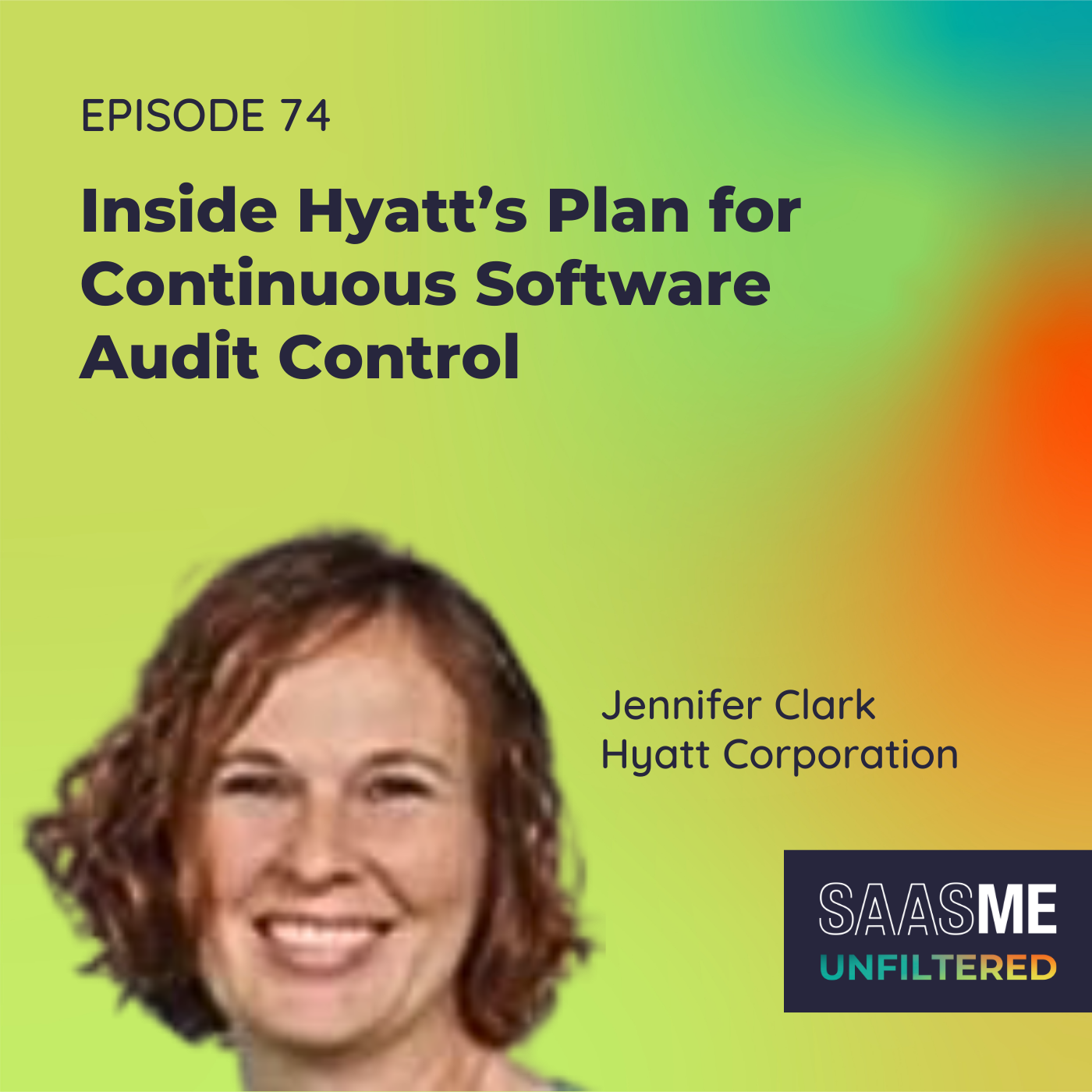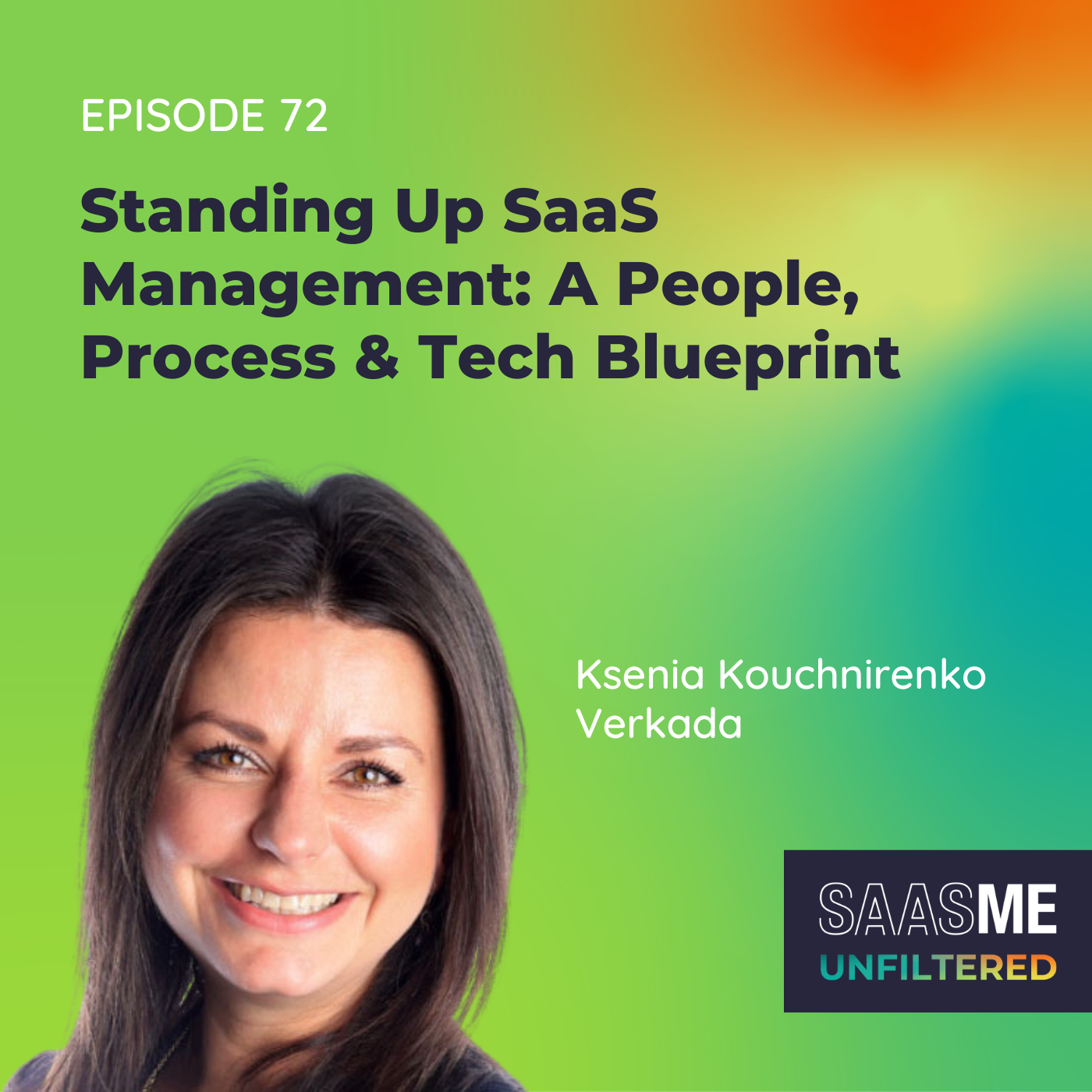Decoding SaaS Rationalization to Drive Cost Savings with Daniel Garcia (Coinbase)
- 0.5
- 1
- 1.25
- 1.5
- 1.75
- 2
Daniel Garcia: We get enamored with certain tools and we think those are the right ones, but we didn't understand what the business was actually using and the criticality of it. So then when you go in to make those tough decisions, and if you didn't do that kind of thorough due diligence, that could be the one that the masses really start to come and say, " Well, I need this." Well, the other tool doesn't do that. So that's the thing that I've seen be the mistake.
Cory: Hello, hello, and welcome to SaaSMe Unfiltered, the SaaS management podcast, the show with give it to you straight, real life advice, from pros knee- deep in SaaS every single day, SaaS management superheroes just like you. I am thrilled to have an incredible IT procurement leader joining us today on the podcast. Our guest today has over 20 years of experience in the sourcing, IT technology, and software asset management space. He began his sourcing career in 2005 at Disney where he found out that he really enjoys the tech space and technology in general. From there, he then moved to the UK to lead the sourcing technology category at JP Morgan, and then to Asia from there to head up technology sourcing. He's also spent time at Facebook where he built tech sourcing from the ground up before heading up software asset management. So professionally I think we could all guess that he's very focused and passionate about technology and driving value with cost savings with software asset management. Today he's at Coinbase leading the IT procurement and SAM space there. On the personal side, I'm not sure how he juggles all of this, but he stays very busy coaching sports for his four children. Probably when he's not coaching, he loves to barbecue and probably never has time any longer to be found on the golf course, but he does enjoy that as well. Welcome to the show, Daniel Garcia, how are you?
Daniel Garcia: I'm doing great. Thanks Cory. Great intro.
Cory: Well, I think you deserve it. Talking about our conversation today, one of the things that we are seeing as top of mind for many IT and procurement teams this year is application rationalization in SaaS and overall cost reductions. Daniel, you've had a lot of experience with this over the last several years so today we're going to get an inside look at how you approach SaaS and hear your advice for teams out there today trying to rationalize their stack. Sound good?
Daniel Garcia: Excellent.
Cory: All right, let's get into it. I want to start it off the conversation with really an org setup question. You, today, are at Coinbase in crypto, which by its very dynamic nature feels the effects of national and global financial trends earlier than a lot of other industries, and certainly more so than a lot of traditional industries. So as you think about that, and your organizational directives, what are they and how are you aligning and thinking about aligning your strategic approach to sourcing and SAM to those overall company outcomes?
Daniel Garcia: Yeah, I think 2023 was definitely a roller coaster year for us and much of the industries out there. We did end the year where the crypto was picking back up, and so I think that's heading into 2024 with a lot of exciting opportunities for us in the crypto economy and still continuing our mission around increasing economic freedom in the world. How that relates to us internally, I think specifically it's a look back of what transpired over the past two to three years of being on a rocket ship and then seeing the downturn and taking some lessons learned from that time period of how to be more thoughtful in some of the contracts that we're structuring. It's also an opportunity to be thinking strategically on how we're building out our processes and our tooling for that time where we ultimately envision us scaling back up. And so it's spending a lot of time trying to be efficient with what we have. It's also continuing to be compliant. And ultimately trying to offer a great experience for our end users who are consuming IT services.
Cory: That's really, really interesting. Did the global markets and the downturn early in 2023, late 2022, did that put a spotlight on the programs in IT sourcing and software asset management? Did it empower your org to be thinking differently and maybe a little bit more on the front edge of innovation and process and cost optimization overall?
Daniel Garcia: Yeah, I think 100%. Being in sourcing, you're always a value add to the company because you can bring a lot of opportunities and efficiencies and sometimes that's cost savings or giving money back to the business to do more. But then when times are difficult, you're even that much more of a value add. You're front and center where the teams are looking for you to really help support them in meeting what their challenges are on their business side, if that's a budget or whatnot. So really getting up in front and getting an opportunity to present a lot of the opportunities and getting buy- in early on really drives for alignment so that when you're making tough decisions, everyone's on board with that. And it's really kind of a great opportunity for sometimes where business partners maybe don't want to always play nice or whatever that might be. So for us, what that really meant was a couple of things, and you talked about this earlier, was about rationalization. And we saw duplicity in the environment. And from my experience, it is not easy to get vendors that are providing similar services out. So it was remarkable to watch how our teams were able to come together and think through all the different solutions and business cases and use cases to rationalize, and that helped immensely when you're thinking about where you have to make tough decisions.
Meredith: Daniel, when you were bringing the groups together to have those conversations, I think this is where a lot of companies struggle. How do we talk about this as a business? How do we cross collaborate? What were some of those things that you looked at when you're examining app redundancy and you've got marketing over here who really wants their thing, and you've got sales over here. That's a tough conversation. What were some of the things your team surfaced and highlighted?
Daniel Garcia: Yeah, Meredith, I think this is a great question. For me, I always look at data drive decisions. So if we can get our hands around data, then that's going to be able to present our teams with all the ammunition that they need. And if I give them that ammunition and I give them that data, more often than not, you get to the decision that you're intended to get to. And so that for us, remarkably, it really started with Zylo and I could get into Zylo and get all the data that I needed. And we were operating in a really short timeline, so I didn't have a whole lot of time to go in different systems and ping different people and get all that information, was really reliant that it was all in a central location and I could easily digest it. So then once you digest it's like, " Okay, how do I kind of quadrant this?" And I think there's a whole bunch of different ways of how you could come up with different quadrants. For us, we just came up with four quadrants. That was, one was governance. So apps that we thought that there was rationalization or that we wanted to put a little bit more management behind that and we'd bucket our apps in there. And then we'd bucket all of our other apps. We'd bucket another group of apps in what we call strategic partners. And these are the apps that you know that they're not going to go away and that you're going to have to have really direct negotiations with those. And then we had a bucket of a whole bunch of apps that fell under IT for some reason, but no one knew what they were or there was no ownership. And we knew, " Hey, if those weren't in the right ownership spot and we had to hand those back to the business, because if they owned it they would have the best view of really what the strategic direction is or the best licensing position might be." And then last but not least would be a bucket was just like, " Hey, we know we can just optimize. The contract is based on license utilization, so if we manage these, we can optimize and we can make sure that we're getting best value for the licenses that we're using." Putting that together and putting that in front of all the various stakeholders and showing them the data behind it, we all were on this common goal. So it was kind of an easy conversation in that sense of where the alignment was and where the opportunity was.
Meredith: I love that framework. Just the framework paired with bringing data to the table, it's easier to have a, I think, a more comprehensive strategic conversation with the business. So I love that.
Daniel Garcia: Yeah.
Meredith: Coinbase, obviously, I think this goes without being said, but very cloud forward business. In IT sourcing you're examining your SaaS, your software, you're looking at licensee, app rationalization. How do you think about the technology category and where software is really fitting into that overall strategy?
Daniel Garcia: One of the great things I think about being SaaS forward, and just pretty much all of our software sits in that space, is I kind of still have this past where the on- prems, the Microsofts and the Oracles of the world, and you always had this anxiety whenever they wanted to speak to you because you didn't know what your true up was going to be and how much they were going to get you for the licenses. And so now you're in this world where it goes back into this theme of data, where it's like all my SaaS is available to me, I can get a clearer picture, and I can see all that data and just the management of it starts to become that much more attainable, especially given in this environment where we don't have a ton of resources, so you have to be kind of efficient in how you're approaching the space. And so from that perspective, I think just Coinbase being a newish company, it's great that we don't have a lot of legacy kind of software. Of course, just like any company, we probably have too many applications, but when you start to look at the redundancy, it's not as exhaustive as say, maybe in my former life where it would've been very high. So I think from that perspective, we're in a good position of where we're at with our software. But it does go just like anything where we're trying to go around application portfolio management, that is a key theme for us, and we'll continue to innovate around how the lifecycle of software comes in and out of the environment.
Cory: Daniel, that's a really interesting thought that you shared. And when you think about legacy software versus SaaS, SaaS has hundreds more applications in every company's stack. What do you think that shift from on- prem to the cloud has done from a procurement and SAM lens? Meaning, because there are so many renewals, is operationalizing a process to drive those renewals and make sure nothing is missed? Does that kind of follow more of the procurement type of principles for managing SaaS where software asset management still applies some of those principles, but it's still rooted in some of those large on- prem types of infrastructure or software titles? What do you think lends itself best to on- prem legacy software compared to the cloud?
Daniel Garcia: Over time, what I have seen within software asset management is this convergence. Like you're talking about the, legacy SAM and how we're managing SaaS, and we're kind of converging this together. Which does go really into this being very focused on a lifecycle management process around how do we intake the software, how do we make sure that that's being categorized correctly from that perspective? How are we managing it? So for example, okay, we just signed an ELA. Okay, so now I know maybe I don't have to be in an optimization position for that software. And then I'm just going to come back and put earmark in 90 days that notification that I need to now go and renew it, versus a software that we couldn't get to an ELA, for whatever reason, so now we're going to want to manage it. So it's putting business rules around, okay, monthly, quarterly, whatever that rate cadence is, we are going to want to go do a check and then we are going to want to go see if there's optimization opportunities. So it's really kind of looking at that overall process. And then as you see that and you say, " Okay, well, that's not really scalable. If I have a whole bunch of software trying to optimize every single one of them, the amount of legwork that takes, and then more importantly, the amount of times I'm pinging the same user, the same question." Like, " Hey, do you still use this software?" Then tomorrow, " Hey, do you still use this next software?" They're going to be immune to it and they're not going to respond to me after a certain point. So it's being kind of strategic around how do we envision that overall process so that we can see that we are looking at the ones that we're managing, but building that automation so that we can ultimately choose those softwares that we push out to get feedback from the users, keeping in mind that there's going to be only so many times that they respond back to us, and then making sure that we're managing it. To kind of bring it back to your question, my view, I think it changes. It feels like it puts more admin maybe in the middle, where in the old world it was kind of true ups. You kind of let the software just extrapolate in the environment and then do the true up at the end and then kind of hope and pray how you're going to negotiate. So start to think about things a little bit more strategically.
Cory: It is. And our take is typically the sprawl of software has created the need for very, very tight renewal processes, along with very, very tight reclamation processes on licensing and consumption details. And if you're not operating both of those together for every renewal, in a programmatic way, not a manual way, then you're missing a lot of opportunity. It mixes together the procurement and software asset management approach so well that managing from a cost perspective, you've got to own those two components, licenses and renewals, and then in front of that, you can lead all the strategy. But if you don't have the basics contemplated and a rock solid process around those, then you lose a lot while you're trying to drive a larger strategy.
Daniel Garcia: Yeah, no, I 100% agree. And when I came to Coinbase, it gets back to I think the basics. One of the things that was already set up was we had notifications. All of our renewals, through Zylo, give us a 90 day notification. And that, I mean, as simplistic as that sounds, gives us a huge headstart that we're not tactically firefighting like, oh, the worst is the vendor comes and says, " you know, have this renewal too?"
Cory: Right.
Daniel Garcia: I'm like, " no, I didn't know that."
Cory: Yeah. Thank you. And now send me the utilization detail so I can negotiate it with you.
Meredith: If you're not unlocking the full value of your SaaS, what are you doing? There is no denying it. SaaS is mission critical to your company's growth and success. And as the number two operating expense for most organizations, it's your biggest opportunity to save money and drive efficiency. The time is now to do something about it. Join me and your fellow IT, SAM, finance and procurement leaders at SaaSMe. SaaSMe is the industry's only dedicated SaaS management event where you can sharpen your skills, hear from your peers, and learn how to unlock value and responsible business growth through smarter SaaS management. Register today @ saasme. com. That's SaasMe. com. Daniel, in addition to Coinbase, you've had some amazing career stops at Disney, at Facebook, at JP Morgan, and I'm sure you've looked at this and gone through this process of looking to cut or reduce applications at each of those stops. What have you learned along the way? Are there blockers that some of our listeners need to look out for? Tough conversations? You talked a little bit about the data and the methodology that you and your team now approach, but just would love to look at what has that looked like across your career? Because those are some hard conversations when you want to, and I always throw marketing under the bus because I'm a marketer, but going to telemarketing, they've got to cut some of the applications that they really love.
Daniel Garcia: Yeah, it's just through my experience, just understanding what's a sacred cow and what whatnot is going to be really the first thing I would really try to get some insights on. I have seen certain applications get teed up for deprecation, and teams not realizing the sacred cow of the product, and that decision quickly getting changed. I have seen applications that weren't sacred cows that had just the same amount of users and redundancy or whatnot, but because they didn't have that following, it was an easy deprecation. So I think that's the first thing is understand your users. Understand your users, what they're using, the tool, how they're using it. And just to kind of a side note, this is what we aspire in software asset management is really building that platform of insights and so that I can give it to the application portfolio managers, so I can say, " You think you know how they're using the tool. I'm just supplying the data to either validate that or you can use that as a means to maybe recalibrate on what your overall strategies are. I'm not telling you how to change your strategy, but I want to provide that data to you." So I think it's that same kind of thought process is just making sure that they have the data that really validates their assumptions and what their strategies are. Because sometimes get in these silos where we get enamored with certain tools and we think those are the right ones, but we didn't understand what the business was actually using and the criticality of it. So then when you go in to make those tough decisions, and if you didn't do that kind of thorough due diligence, that could be the one that the masses really start to come and say, " Well, I need this." Well, the other tool doesn't do that. So that's the thing that I've seen be the mistake. And then on the flip side, when I've seen our teams do it here at Coinbase, I've just seen them thoroughly go through those so that even when people start to chime in and say, " Well, this tool doesn't do it." It's like, " Well, here's the use case. Here's what it does. Here's how you do it. I'm giving you that option. You might not like it, but I am giving you that option to show you how I thought through your use case."
Meredith: You have mentioned throughout the show so far just some of the power around looking at the data and rationalizing some of the app purchases that a business has. Do you feel that is that the low hanging fruit for a lot of businesses is just that strategy of app rationalization, really looking at those duplicative apps? Are businesses really missing out by not taking advantage of that and really looking there?
Daniel Garcia: The way I think about it is I get back to my quadrant strategy and that you really kind of have to put each one of those softwares in that quadrant strategy to line up which one is going to kind of bring you the highest impact. So I kind of walked through in 2023 what we did. Going into 2024 what was super important to me is where is the low hanging fruit? And sometimes it is the rationalization, but sometimes it could be, " Hey, there's a software that maybe we're paying a lot, and there's competition in the market for that same software, and there might be more opportunity to bring in that competition because their price points are lower." And so now you're dealing with this aspect, once again, we don't have a lot of resource, so I don't have a lot of time to go hold five different vendor meetings and meet with the sales teams and try to figure out, " Hey, can you give me a quote?" But what now I can do is I can go in Zylo and I can do a benchmark and I can easily see what the competition is compared to what I'm paying. So first off, I can see, " Well, am I even paying at market?" And if I'm not paying at market, then I'm going to put that as the project, " Okay, tee up for negotiation in 2024, and we think we can get X percent based on what the market is telling us." Or I can also say, " There's three other competitors in this space and they're all offering it at 50% of what the price is. There's opportunity." And then you kind of build that project plan together. You have to do your analysis, " Well, what's the cost to implement and the cost to change and all of that," to figure out how does that stack up? But now in 2024, I can go in with a plan and I can say, " Here's what we're going to go attack." And still in these times, we're managing our costs. Finance loves this because we're going in and we're saying, " Hey, we think we can take efficiency off of this because our intelligence is telling us that we can go out and negotiate or we can competitively bid this situation, this solution." That is giving us an extreme advantage right now as we're going into 2024 around what the opportunities are. And the business loves this because now it's like, " Okay, we're going to give money back so you can do more in something else," professional services, hardware, wherever the investment might be.
Meredith: Such an incredibly thoughtful approach. I love that.
Cory: It is, and I want to pick up on that because, Daniel, you're sitting in this seat where you have built and led procurement, you've built and led software asset management. And both of those areas, you mentioned it earlier, in SAM, you're looking to provide that license position report, the insights around the data over to your counterparts. In procurement typically, that's a similar approach, understanding where you're able to drive out unused waste, lower the overall cost. But license reduction is typically something that the app owner or that IT is involved with, in most organizations. So what type of programmatic are you taking in procurement and SAM around license management for your SaaS applications? How do you build those bridges with IT? And how are you looking to deliver this as we head into the rest of this year?
Daniel Garcia: My strategy coming into Coinbase was one of, we are specifically focused on any application that IT pays for. So there's of course a whole bunch of applications that sit outside of IT. So to me, it's like if I could build a robust process around how we're looking at managing those applications, I can then roll that out to the rest of the company. And this could be different models. This could be self- serve, " Hey, I built this process." So in HR tech you have your applications. This is how we're doing it. We built the workflows. We built the configurations. Now you're just applying it to your set of suppliers. Or this could be like, "You know what? You just ingest those services and then we expand it." So it's not trying to conquer the world, but it's just being like, " Hey, this is how we're doing it in IT and we're being strategic about it. We're being thoughtful. And we're bringing efficiency. Now we're offering it to the rest of the company and you can come jump on board." And the reception has been very positive. People are very interested in it. And so it's easy too because it comes, bringing this back into Zylo where I've just got one tool that I just have to bring them into. I don't have to be like, " Go look at your AP system, pull the data out of the console, look at your ticketing, and kind of mesh this all together, and then you can kind of build our process." It's like, " No, the process is all consolidated. It's all in one place. All you have to do is apply that now." So that's really kind of our strategic mindset, how we're thinking through it, and it's getting some good momentum within the company.
Cory: Yeah, I would fully agree with that strategy, building and delivering to IT as an early outcome, bring them into the fold, and then leverage that partnership to really drive a unified approach across the organization.
Daniel Garcia: Yep.
Cory: Stellar. I mean, that is the playbook. That's awesome.
Meredith: Well, Daniel, we always like to end the show with one sort of fun question. I'd love to know across your career, what is the most surprising app or piece of technology that you have come across that someone expensed?
Daniel Garcia: Someone expensed? I will tell you this. At Facebook, we really struggled to get expense data. So I'd ask for it. I'd say like, " Okay." Because it's part of the SAM playbook, it's look at what's in expenses and see where there's redundancy and stop that. And so I'd get the expense report and it would say, I don't know, " Amex charge for software." Or it would say, " Microsoft charge for software." So it wouldn't give me a whole lot of visibility to see applications. But what I could say is this, I guess, I don't know if it was fun, but we had a policy like you couldn't expense applications, but they still did. But it was always fun to tell them, You know that$ 1000 app? You're going to have to pay for that out of your pocket because we're not going to expense it." That was kind of fun. But I think the other thing that, I always laugh, but it's seeing the applications that you already have available as offer and people are still expensing it. Maybe I kind of get a chuckle from that.
Cory: That's a good one. And also one that we see in every single customer. There's always the applications where you've got people expensing or even cutting their own purchase orders outside of the corporate ELA with no knowledge of that coming together. Early insight.
Daniel Garcia: Totally happens here too.
Cory: Daniel, this has been a fascinating conversation. I think you, of all people, bring a perspective from procurement and SAM, which we've mentioned, but across so many large organizations and progressive organizations, that I think what might be common sense to you is textbook playbook kind of strategy for other leaders that are listening today. Meet up with IT, get that seat at the table, deliver value to them, prove it out, and then go and go very strong. I love that. I think as you're thinking about your overall dynamics each year evolving with the market, you've got to be flexible to be changing course direction at a moment's notice and doing that with a lot of grace and a lot of empathy within the organization. So I've seen that firsthand from you, and it's very, very impressive. Thank you for coming on today. I think those insights are incredible. Thank you so much, Daniel.
Daniel Garcia: Awesome. Well, thank you so much for having me.
Cory: Did you enjoy the episode? Pass it along to your friends. Subscribe to get notifications for the latest episode. Share your favorite takeaways and join the conversation on social media using hashtag saasmeunfiltered.
DESCRIPTION
How many applications, redundancies, and duplicative tools are in your stack? The sprawl and inefficiency is real, and the opportunity to optimize is massive. In this episode, learn how IT procurement and software asset management expert Daniel Garcia uses SaaS app rationalization as a key lever in Coinbase's cost reduction strategies. Discover how to align your sourcing approach with organizational outcomes and leverage data-driven decisions to optimize your software stack.
Key Takeaways
- [00:00 - 02:39] Introduction to Daniel Garcia, and background at Coinbase leading IT procurement and SAM
- [02:39 - 04:17] Aligning SAM strategy to overall company outcomes in the cryptocurrency industry
- [04:18 - 06:02] Cost optimization and innovation, rationalization with software solutions
- [06:01 - 08:26] Examining app redundancy, data-driven decisions driven by Zylo that enable better governance
- [08:27 - 10:16] A clearer picture of SaaS use and data, thinking about the lifecycle of software
- [10:20 - 13:12] Infrastructure and on-prem, a convergence of cloud similar to legacy SAM and SaaS coming together
- [13:13 - 14:38] Processes and utilization data, fueling better negotiations in renewals
- [16:17 - 18:19] The sacred cow of the product, avoiding deprecation as a necessary software
- [18:18 - 20:57] What businesses miss out on by not taking care of low-hanging fruit software expenses, monumental savings in cost
- [20:59 - 23:35] Managing different department software beyond IT, a robust process and building self-serve options
- [23:35 - 26:11] The most surprising app or piece of technology Daniel has seen expensed
Today's Host
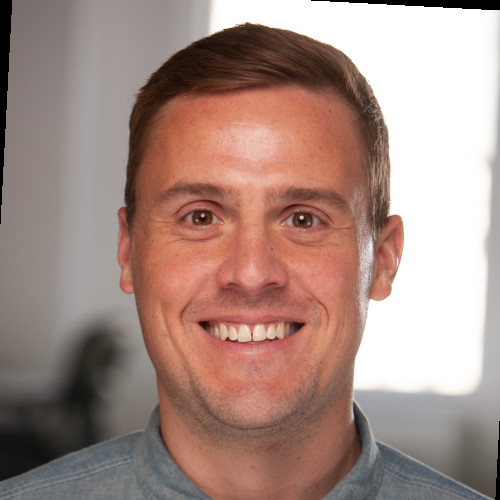
Ben Pippenger
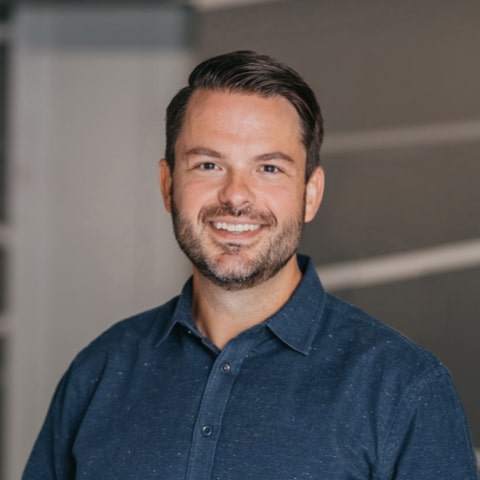
Cory Wheeler
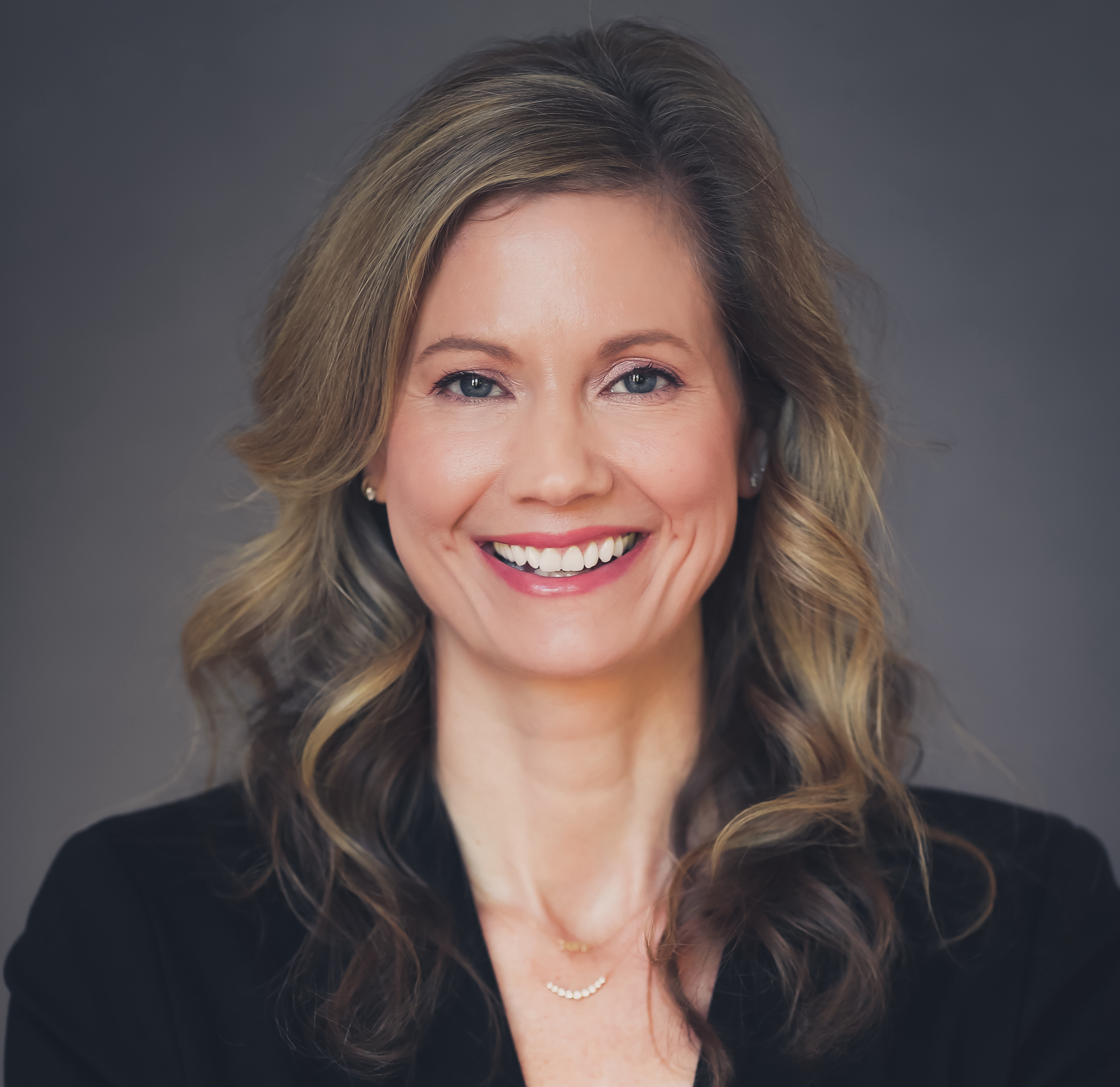
Meredith Albertson
Today's Guests
